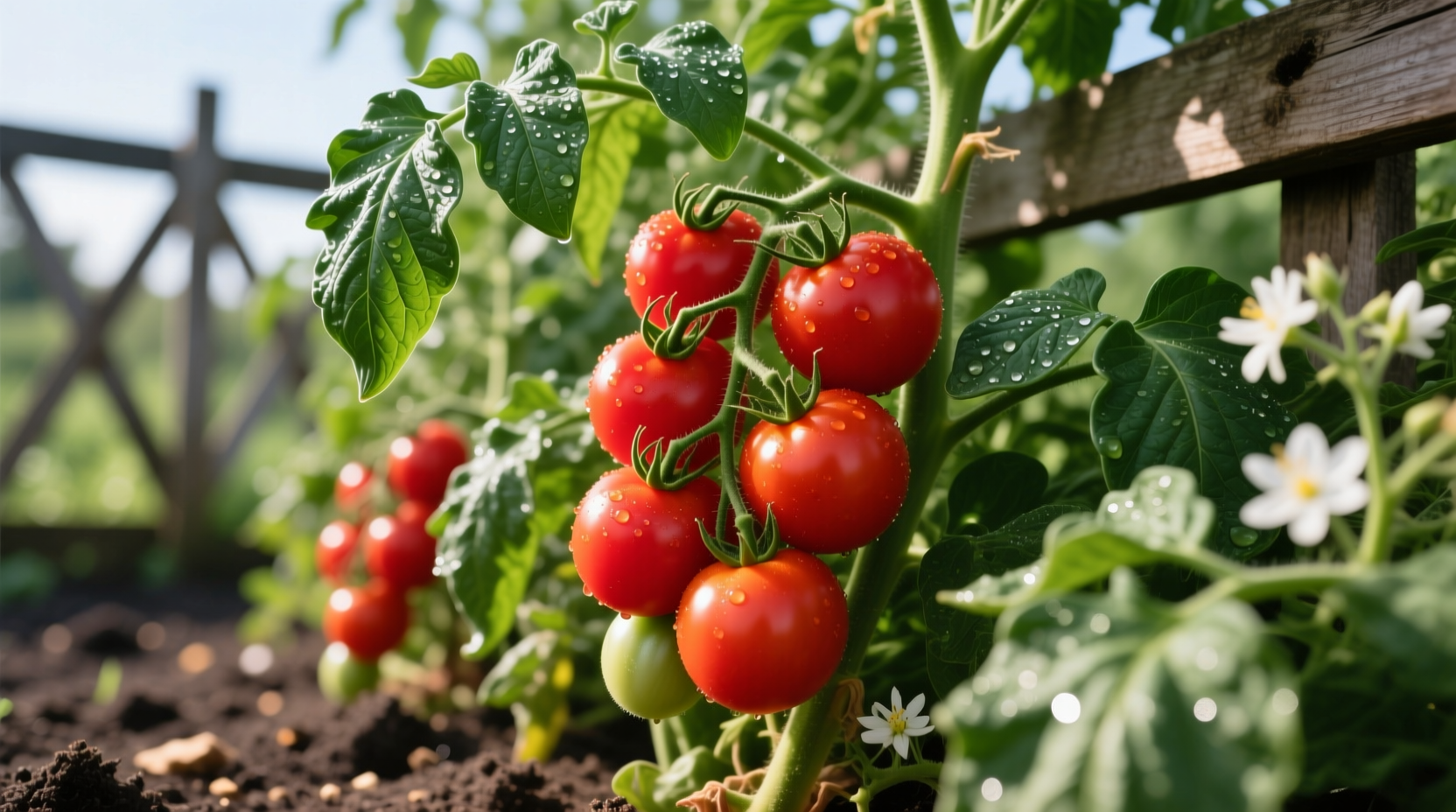If you're searching for "tomato towing," you've likely made a common typo. The correct term is tomato growing - the practice of cultivating tomato plants for harvest. This comprehensive guide provides science-backed techniques for successful tomato cultivation, covering everything from soil preparation to harvest, with actionable advice you can implement immediately.
Why Proper Tomato Growing Techniques Matter
Tomatoes are one of the most popular garden plants worldwide, yet many home growers struggle with poor yields, disease, and disappointing flavor. The difference between mediocre and exceptional tomatoes often comes down to proper growing techniques. Unlike "towing" (which refers to vehicle transport), "growing" requires specific knowledge about soil conditions, watering practices, and plant support systems.
Your Tomato Growing Journey: Step-by-Step
Planning Your Tomato Garden
Successful tomato growing begins long before planting. Consider these critical factors:
- Variety selection: Choose varieties suited to your climate and space
- Timing: Plant after last frost when soil reaches 60°F (15.5°C)
- Location: Select a spot with 6-8 hours of direct sunlight daily
| Tomato Type | Days to Maturity | Best For | Space Required |
|---|---|---|---|
| Determinate | 50-70 days | Container gardening, canning | 2-3 feet between plants |
| Indeterminate | 70-90+ days | Fresh eating, extended harvest | 3-4 feet between plants |
| Semi-Determinate | 60-80 days | Balanced production | 2.5-3.5 feet between plants |
Soil Preparation: The Foundation of Success
Tomato plants require nutrient-rich, well-draining soil with a pH between 6.2-6.8. Before planting:
- Test your soil pH using a reliable kit
- Amend with 3-4 inches of compost or well-rotted manure
- Add balanced organic fertilizer according to soil test results
- Mix in crushed eggshells for calcium (prevents blossom end rot)
According to research from the Oregon State University Extension Service, tomatoes grown in properly amended soil produce 30% more fruit with significantly fewer disease problems.

Planting Techniques That Make a Difference
How you plant tomatoes affects their entire growing season:
- Deep planting: Bury 2/3 of the stem to encourage stronger root systems
- Spacing: Proper air circulation prevents disease (see table above)
- Mulching: Apply 2-3 inches of straw after soil warms to conserve moisture
Watering Wisdom for Optimal Growth
Consistent watering is critical for preventing common problems like blossom end rot and cracking:
- Provide 1-2 inches of water weekly (more during hot, dry periods)
- Water at the base of plants to keep foliage dry
- Morning watering reduces disease risk
- Drip irrigation is ideal for consistent moisture delivery
Research from the University of Minnesota Extension shows that tomatoes receiving consistent moisture produce fruit with 25% higher lycopene content, enhancing both nutritional value and flavor.
Essential Support Systems
"Towing" might pull vehicles, but proper tomato support prevents plants from sprawling on the ground where they're vulnerable to pests and disease. Choose the right system:
- Cages: Best for determinate varieties, require minimal maintenance
- Stakes: Ideal for indeterminate varieties, require regular tying
- Trellises: Space-efficient for small gardens, excellent air circulation
Pest and Disease Prevention Strategies
Proactive management beats reactive treatment:
- Rotate crops annually to prevent soil-borne diseases
- Use copper fungicide sprays preventatively for early blight
- Hand-pick hornworms early in the morning when they're most visible
- Plant basil nearby as a natural pest deterrent
Harvesting for Peak Flavor
Timing your harvest correctly maximizes flavor and nutritional content:
- Pick when fruits show full color but are still slightly firm
- Harvest in the morning when sugar content is highest
- Never refrigerate tomatoes - it destroys flavor compounds
- Store at room temperature stem-side down
Tomato Cultivation Timeline: From Wild Plant to Garden Favorite
Understanding the history of tomato cultivation provides context for modern growing practices:
- 700-500 BCE: Earliest cultivation by Aztecs and Incas in Central and South America
- 1521: Spanish explorers bring tomatoes to Europe
- 1800s: Tomatoes gain acceptance in North America after initial fears of toxicity
- 1940s: Development of hybrid varieties with disease resistance
- Present: Over 10,000 tomato varieties exist worldwide
When Standard Techniques Don't Work: Context Boundaries
Not all tomato growing advice applies universally. Consider these context boundaries:
- Container gardening: Requires more frequent watering and specialized soil mixes
- Humid climates: Disease prevention becomes paramount; choose resistant varieties
- Cool climates: Short-season varieties and season extension techniques are essential
- Urban environments: Vertical growing systems maximize limited space
Troubleshooting Common Tomato Problems
Identify and address these frequent issues:
- Yellow leaves: Often indicates nitrogen deficiency or overwatering
- Blossom end rot: Caused by calcium deficiency, usually from inconsistent watering
- Cracking: Results from uneven watering after dry periods
- Poor fruit set: Can be caused by extreme temperatures or lack of pollination











 浙公网安备
33010002000092号
浙公网安备
33010002000092号 浙B2-20120091-4
浙B2-20120091-4